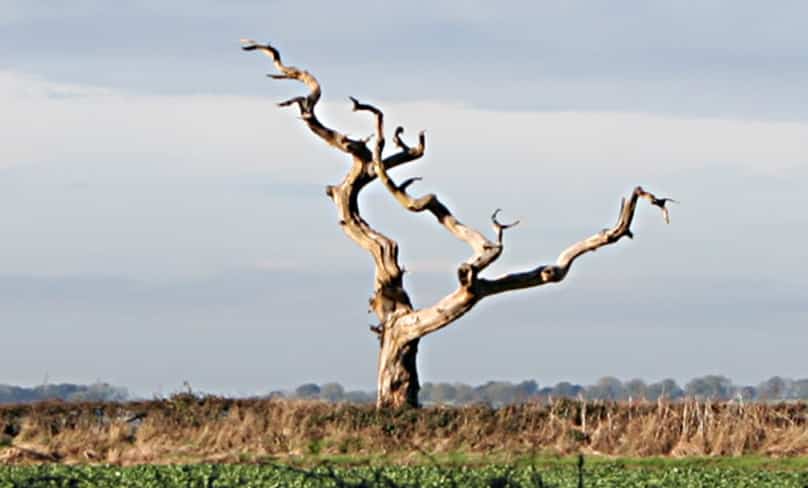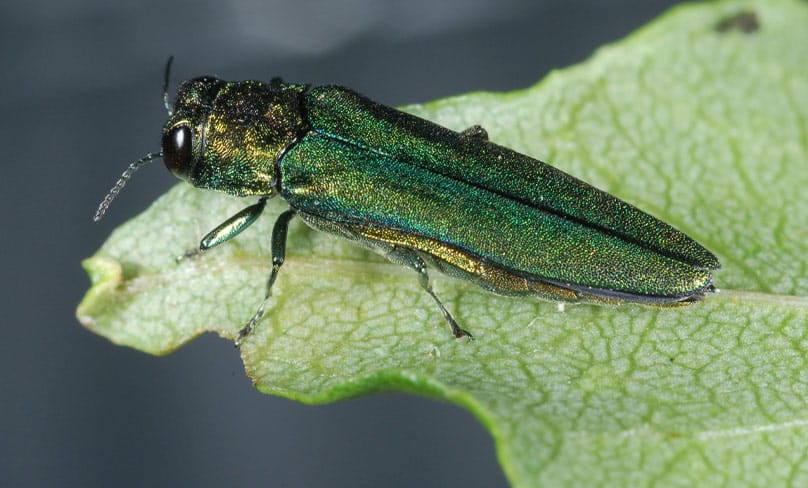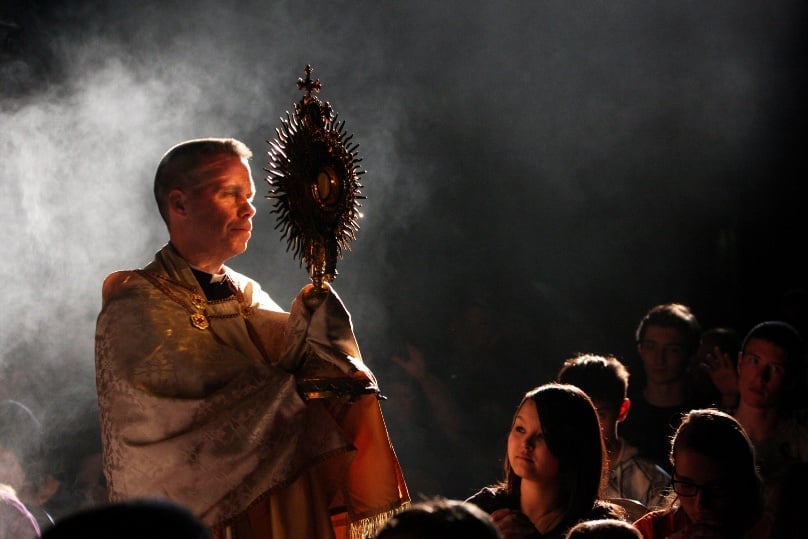
The emerald ash borer is beautiful metallic green beetle that’s been making its way from state to state; and it is hungry. It lays its eggs on an ash tree’s bark, and when the larvae hatch, they bore through the vascular tissue of the tree until it can no longer move water and nutrients around; and then the tree dies.
It would be hard to describe just how valuable ash trees are. They are pretty, gracious trees, strong and elastic, a valuable part of wetlands, and beloved of butterflies; and they’re a favored material for that most American of products, the baseball bat. But the ash borer’s range is spreading, and because of these ravenous beetles, we’re in true danger of losing an entire genus, all of our ash trees.
There’s a lot of concern, even panic, in the face of this threat, and with good reason. But a naturalist I heard on the radio was strangely placid about it. He said that when you do see signs of an infestation, all is not lost. You may have as many as five years to save an affected tree. Infested trees can be treated and, with care, rescued.
If a particular tree is lost, quarantines can be put in place before the whole grove is overwhelmed. Some communities have had luck introducing stingless, parasitoid Chinese wasps who are just as hungry for ash borers as ash borers are for trees. And campers are learning to use local firewood, rather than moving potentially infested wood from site to site.
He didn’t think there was no cause for concern. But he wasn’t in a panic, either. He wanted people to take the threat seriously, and he wanted people to take responsibility for their part in the solution; but he did believe there WAS a solution.
He had spent countless hours among these trees, diagnosing them, caring for them, treating them, and looking to the future to plan ahead for what he could not change. This man, who’d been facing the problem head on for years, was hopeful.
It’s a strange thing, but when I hear sensationalized documentaries about environmental devastation, I come away drained and horrified, exhausted with despair over what is becoming of the natural world.

Not so with listening to this man, who has spent his life literally face to face with the enemy. He was, as I said, placid, and I went away feeling hopeful about the future of the forest. Not complacent, but hopeful.
I thought of this naturalist when I read the words of Katie Prejean McGrady, another true laborer in the vineyard.
She travels around the country speaking to Catholics, encouraging them in their faith and challenging them to change their lives and come closer to Christ. Like anyone, she has her hard days; but she is also full of hope.
McGrady recently commented on Twitter, “One of the weird privileges of this job is getting to spend time with priests from all over the country, chatting about everything from liturgy & preaching to seminary formation & favorite foods. And almost every time we’re done talking, I think ‘The Church is gonna be okay.’”
Strange, isn’t it? Who would know better than McGrady, who has witnessed, over and over again, what danger the Church is in? Who but priests, who spend their lives literally face to face with the enemy?
Who but priests understand better how serious our spiritual peril is, after opening their ears to an endless onslaught of sin, putting themselves every waking moment in the way of every kind of insult, assault, frustration, and spiritual infestation?
If anyone should be hopeless, it’s priests. If anyone should be in a panic, it’s someone who spends time listening to how they spend their days. And yet the holiest priests I know are placid. Not complacent, but full of a strange and contagious hope.

They spend countless hours among their flock, working with specific individual souls, diagnosing them, caring for them, treating them, and looking to the future to plan ahead for what they cannot change. And they are, on their best days, guardedly hopeful.
So when I feel panicked about the future of the country and the future of the Church, I try to spend some time with priests — not fame-driven ideologues with an endless hunger for headlines and celebrity. Not the ones who make a living drumming up panic and fear, but the ones who spend the bulk of their days among the people.
The ash trees, like all things of this world, will eventually be overcome — if not by the ash borer, than by plague or pollution, nuclear war or armageddon. But not so the immortal soul of man.
Why? Because we have caretakers, who, through the power of the Holy Spirit, have the power to heal any spiritual disease. They see clearly the nature and scope of the threat, and they have a plan. They’re carrying out the plan.
The celebrity fear-mongers may not exactly be wrong, but they are wrong-headed, and they have nothing to offer but fear. Listen instead to the laborers, the ones who work with individual souls, day in and day out. They have a plan. Be open to the hope they can offer.
